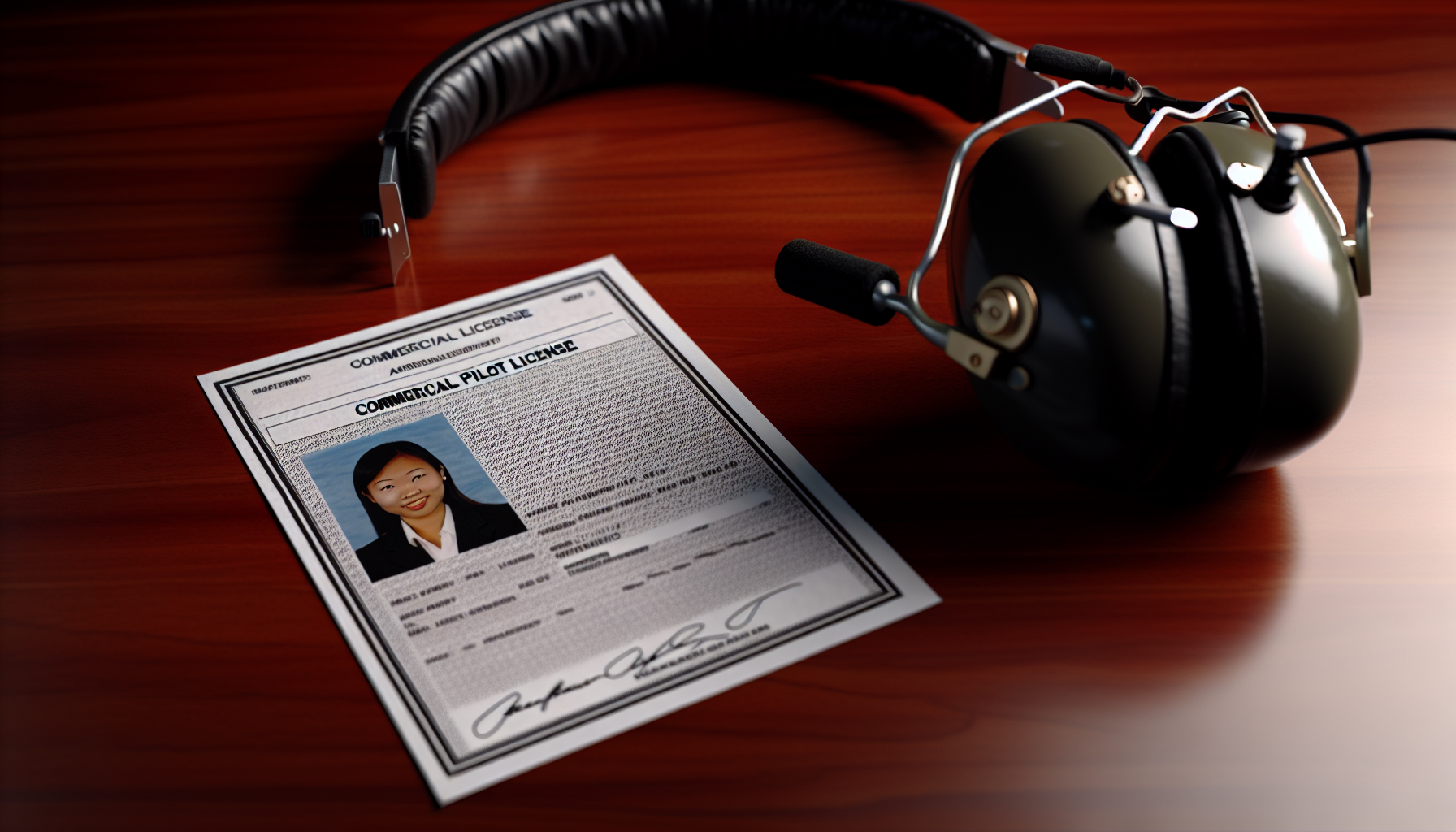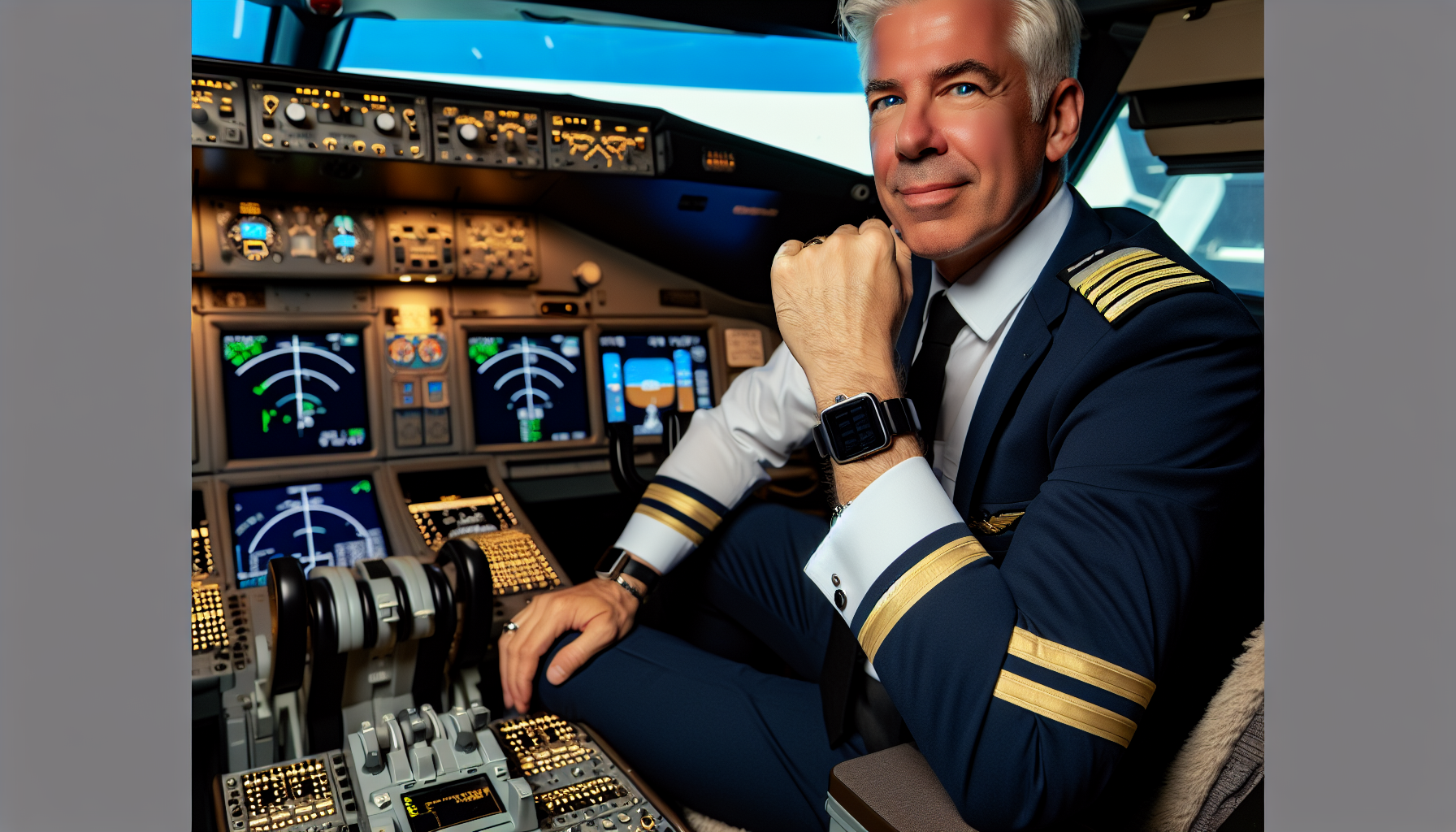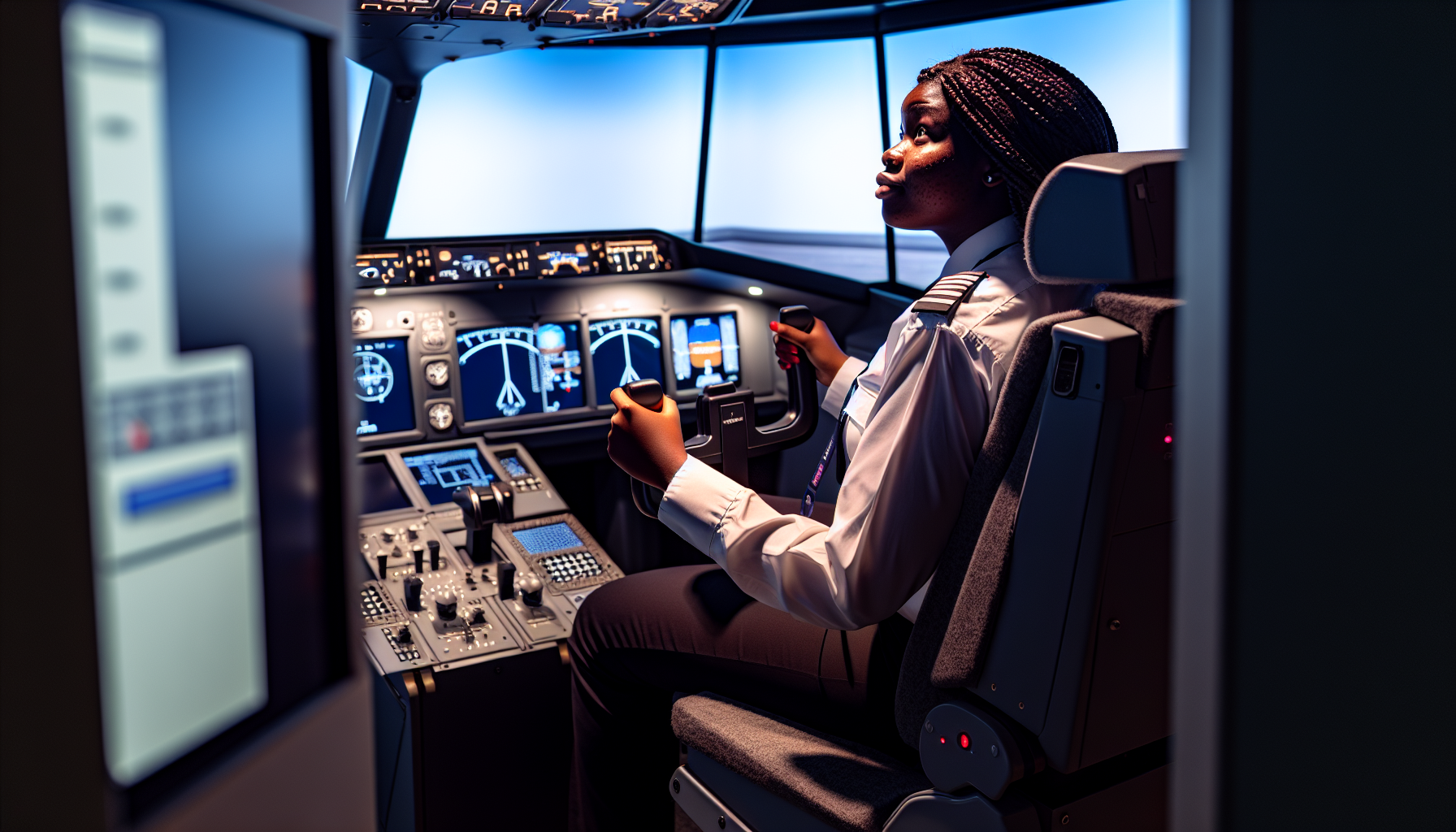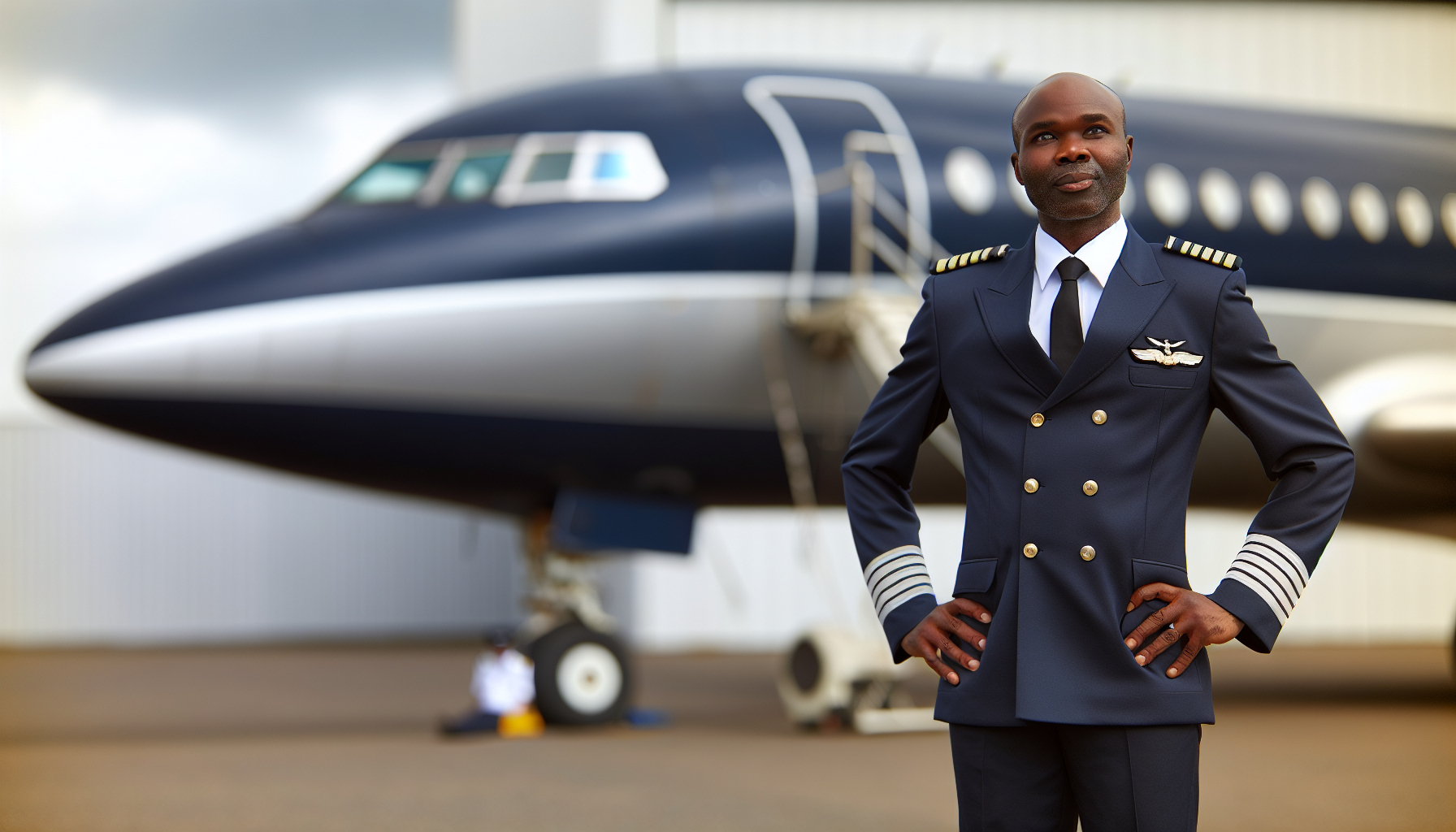How to Get Commercial Pilot License in 5 Simple Steps
Feb 09, 2024
Ready to earn your wings? A commercial pilot license is your ticket to a dynamic career in aviation. This article cuts straight to the chase on “how to get commercial pilot license”, outlining the prerequisites, training, and exams you’ll face. Whether you’re just starting or already clocking hours in the air, we’re here to guide you through each step towards your commercial pilot career, clearly and directly.
Key Takeaways
-
Earning a commercial pilot license unlocks various career paths in aviation, from airline and charter pilots to flight instructors, offering increased earning potential and job opportunities.
-
Prospective commercial pilots must meet FAA requirements including age, medical fitness, a private pilot certificate, and a minimum number of flight hours. Success in this role relies on a strong foundation in flight knowledge and skills.
-
To obtain a commercial pilot license, one must choose a reputable flight school, complete ground and simulator training, pass FAA exams, accumulate required flight hours with specific ratings, and pass the FAA practical test (checkride).
Commercial Pilot License: Definition and Benefits

A commercial pilot, a certified aviator licensed to fly aircraft for compensation, possesses the necessary skills and qualifications to operate and navigate commercial flights safely. These pilots transport passengers or cargo to different destinations after meeting the requirements for a commercial pilot certificate, also known as a commercial certificate. This is a step beyond having a private pilot license, which limits pilots to non-commercial operations.
Obtaining a commercial pilot license opens the potential for a wide range of career opportunities in the aviation industry. Here are some options:
-
Commercial airline pilot
-
Corporate pilot
-
Charter pilot
-
Cargo pilot
-
Flight instructor
-
Air ambulance pilot
-
Agricultural pilot
-
Test pilot
Not only does a commercial license pave the way for these career paths, but it also offers the potential for higher income.
Types of Commercial Pilots and Job Opportunities

As a commercial pilot, your wings spread across multiple sectors. Major airline pilots serve over 5,000 airlines globally, flying both domestic and international routes. The demand for airline pilots is on the rise due to a high number of retiring pilots, creating ample job opportunities. If you prefer staying closer to home, you could consider becoming a regional airline pilot, primarily covering domestic routes with fewer overnight trips. The beauty of being an airline pilot extends beyond the job - with structured career progression, extensive benefits, and the thrill of traveling, every day feels like a new adventure.
However, airlines aren’t the only ones who can reach the sky. Have you ever thought about delivering packages for FedEx or UPS? As a cargo pilot, you’re the backbone of the delivery industry, ensuring parcels reach their destinations in a timely manner. Alternatively, you could become an aircraft salesmen pilot or a ferry pilot, delivering newly purchased aircraft to the buyers’ destinations, a role that’s currently buzzing due to the high in plane manufacturing.
Moreover, commercial pilots can specialize in unique roles like medical and air ambulance pilots, firefighting pilots, agricultural pilots, and even airshow and stunt pilots. You could also provide valuable services to federal agencies, local and state law enforcement, businesses, and governments as a pilot in government services, law enforcement, and contract work. And let’s not forget the role of a flight instructor, educating aspiring pilots in schools, colleges, or airlines, fostering the next generation of aviators. With a commercial pilot license, the world truly is your oyster.
Eligibility Requirements and Prerequisites
Before you initiate your quest to become a commercial pilot, you need to meet certain eligibility requirements set by the Federal Aviation Administration (FAA), including:
-
Age
-
Medical fitness
-
A private pilot certificate
-
A particular number of flight hours
Let’s delve a little deeper into these requirements.
Age Requirement and Medical Fitness
Primarily, you need to be at least 18 years old to apply for a commercial pilot license. However, your age is secondary; your physical health carries more weight. As a commercial pilot, you’ll be responsible for the safety of your passengers and crew, and this responsibility requires you to be in good health.
To assess your medical fitness, you must obtain at least 2nd Class Medical Certificate, though 1st Class is required for some kinds of jobs. This certificate validates your medical fitness, ensuring you’re fit to fly professionally. Meeting these age and medical requirements is your first step towards becoming a commercial pilot.
Private Pilot Certificate and Flight Experience
Possessing a private pilot certificate is akin to owning a ticket to the world of commercial aviation. You must hold an up-to-date private pilot certificate before applying for a commercial pilot license. But having a private pilot certificate isn’t enough on its own; you also need to have logged a certain amount of flight time.
For commercial pilot license eligibility, you must have logged a minimum of 250 total flight hours, of which at least 100 hours must be in the pilot-in-command role, with at least 50 of these hours flown in airplanes. Additionally, you must have logged at least 50 hours of cross-country flight time, with a minimum of 10 hours carried out in airplanes. These requirements are not just numbers; they ensure you have the necessary experience and skills to fly commercially.
5 Simple Steps to Obtain a Commercial Pilot License

Navigating the path to becoming a commercial pilot is like plotting a flight plan. It involves a series of steps that will lead you to your destination. These steps include:
-
Choosing a reputable flight school
-
Completing ground school
-
Passing the FAA written exam
-
Accumulating flight hours and earning ratings
-
Passing the FAA practical test, also known as the checkride.
Step 1: Choose a Reputable Flight School
The path to becoming a commercial pilot commences with a flight school, but not all schools are created equal. Selecting a flight school that adheres to FAA regulations and provides top-notch training is vital. Schools recognized with an AOPA Flight Training Experience Award, indicated by a ‘winner’ icon, are known for their excellent training, based on customer feedback.
When selecting a flight school, consider the following factors:
-
The school’s curriculum
-
The qualifications and availability of instructors
-
The school’s safety record
-
The condition of its fleet
-
Whether the school’s instructional methods match your learning style
-
Whether the school provides ground school classes or home-study with instructor guidance
It’s also essential to use tools such as AOPA’s Flight School Finder to help you identify reputable local flight schools.
By visiting prospective flight schools and talking to staff, you can align your flying goals with the appropriate pilot training and certification levels offered.
Step 2: Complete Ground School

Once you’ve selected a flight school, your subsequent move is to finish ground school. Ground school is where you’ll learn about the theoretical aspects of flight, including the principles of flight, meteorology, and aviation regulations. The curriculum covers advanced topics like performance charts, emergency operations, and air navigation facilities, building upon the knowledge gained for a private pilot certificate.
Step 3: Pass the FAA Written Exam
After successfully finishing your ground school and simulator training, you can then tackle the FAA written exam. This exam consists of multiple-choice questions, and a passing score is 70%. Sounds challenging? Don’t worry! With the right preparation resources, you can ace this exam.
Online test prep resources, like Flight Nerd Air Force’s Briefing Room Squadron, offer multiple-choice questions, thorough explanations, and are regularly updated with new FAA material. These resources emulate the actual exam’s format and functionality, aiding in your familiarity with the testing environment. The FAA written exam is administered at certified computer testing centers, which charge a fee for the service.
Step 4: Accumulate Flight Hours and Earn Ratings
Upon successfully passing the written exam, your following task is to rack up the necessary flight hours. The FAA mandates a minimum of 250 hours of flight time for a commercial pilot license, including 100 hours in powered aircraft and 50 hours in airplanes. In addition to completing 50 hours of cross-country flights and 100 hours as a pilot in command, you are required to undertake 10 hours of instrument training and 10 hours in Technically Advanced Airplanes to fulfill the requirements..
While accumulating flight hours, it’s also beneficial to earn additional certifications, such as an instrument rating or a multi-engine rating. These ratings not only enhance your employability but also open up the possibility for you to fly larger and more complex aircraft.
Step 5: Pass the FAA Practical Test (Checkride)
The last hurdle in securing your commercial pilot license is to pass the FAA practical test, affectionately referred to as the checkride. This test consists of two parts: an oral exam and an in-flight test. The oral exam tests your aviation knowledge, including flight planning skills and understanding of weather’s effects on the planned flight.
The in-flight test, on the other hand, assesses your piloting skills. Here, you must demonstrate that you’re ready to be the Pilot-in-Command by showing proficiency with required maneuvers and good risk management. Courses like the KING Commercial Pilot Practical Test Course can help you prepare for this test by simulating the checkride process with an FAA examiner.
Once you pass the checkride, you officially become a commercial pilot!
Building Your Career as a Commercial Pilot

With your commercial pilot license in hand, you can now commence building your career. This license serves as a stepping stone towards specialization and career advancement, such as becoming an airline transport pilot or starting an aviation-related business. As a commercial pilot, you must meet rigorous standards, providing you with a greater sense of qualification and security to operate aircraft safely.
Becoming a Certified Flight Instructor (CFI) is a widely recognized method for pilots to build flight hours while gaining valuable experience and enhancing their skills. Apart from accumulating flight hours, career success in the aviation industry also relies on setting clear career goals and continuously developing skills through networking and learning.
Time Building Strategies
Accumulating flight hours is essential for advancing in your career. For military pilots, their active-duty experience can be leveraged to accumulate flight hours that count towards civilian-rated pilot licenses. For others, entry-level roles such as a flight instructor or banner tow pilot can help build the necessary flight hours for career progression.
Apart from these roles, you can also take on jobs like towing banners at events or providing scenic aerial tours to gain flight hours and earn income. If you prefer more autonomy in your flight time accumulation, renting a plane is an option, although it involves rental expenses and does not produce income.
The more flight hours you log, the more career opportunities open up for you.
Networking and Job Search Tips
Networking holds a significant place in the aviation industry. You can connect with and seek advice from industry professionals through online aviation forums and communities. You can also seek out mentors experienced in your chosen career path, which can be pivotal in receiving guidance and enhancing your career prospects.
When it comes to job searching, here are some tips to improve your chances of success:
-
Tailor your CV for each job application to match the specific requirements.
-
Keep your applications, including your LinkedIn profile, current and reflective of the job’s specific requirements.
-
Carefully select job positions that align with your career objectives and qualifications.
-
Follow up on job applications to underscore your interest and tenacity in securing the position.
By following these tips, you can increase your chances of landing your desired job.
Summary
Obtaining a commercial pilot license might seem like a daunting task, but it’s simpler than you think. With the right flight school, extensive ground school training, and successful completion of the FAA exams, you can become a commercial pilot. The journey doesn’t end here; it’s just the beginning. Whether you choose to specialize as a cargo pilot or an airline pilot, your commercial pilot license opens a world of opportunities. So, strap in, rev up those engines, and get ready to explore the vast skies!
Frequently Asked Questions
How long does it take to become a commercial pilot?
It can take aobut two years to become a commercial pilot. You will need at least 250 hours of experience, which can be earned in this timeframe through structured training programs.
How hard is it to get a commercial pilot license?
Becoming a commercial pilot is challenging and requires a significant time commitment, typically about 18 months for the training course. It also demands a minimum of 250 hours of flight time and more advanced training to obtain the commercial license.
How much does it cost to become a commercial pilot?
It often costs approximately $100,000 to become a commercial pilot with no previous experience or $90,000 if starting with a private pilot certificate, including all necessary flight training and certification. Start pursuing your dream today!
What are the qualifications to be a commercial pilot?
To become a commercial pilot, you need to meet certain qualifications such as obtaining a commercial pilot's license and accumulating a specific number of flight hours. Pursuing this career can be a rewarding journey filled with growth and opportunities.
What is a commercial pilot?
A commercial pilot is a certified aviator who has met the necessary requirements to receive compensation for operating an aircraft, unlike a private pilot who cannot legally receive payment for flight services.
